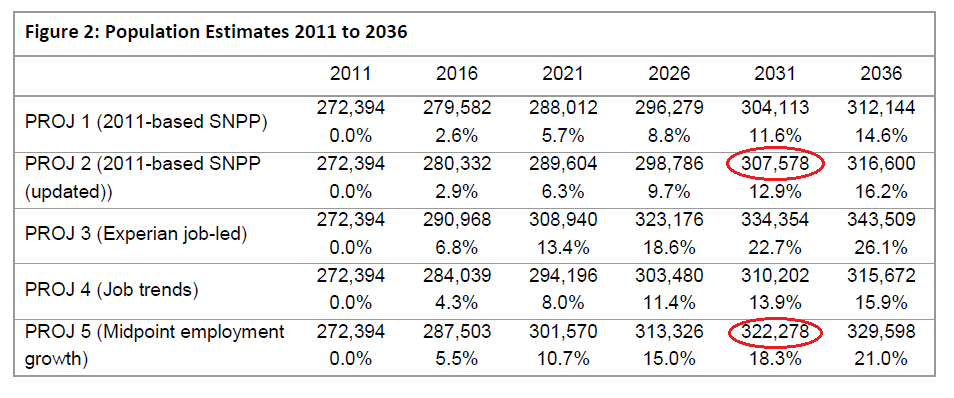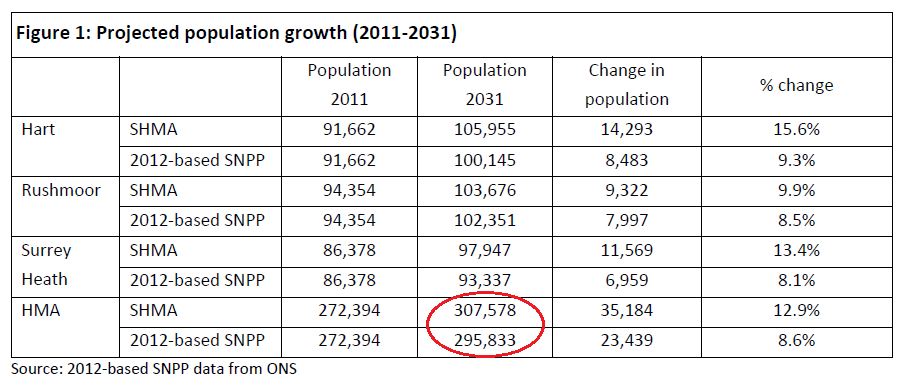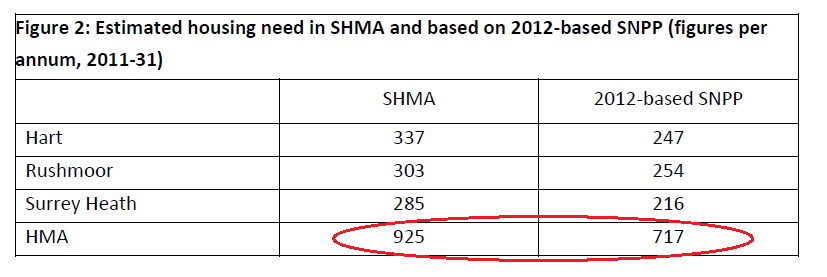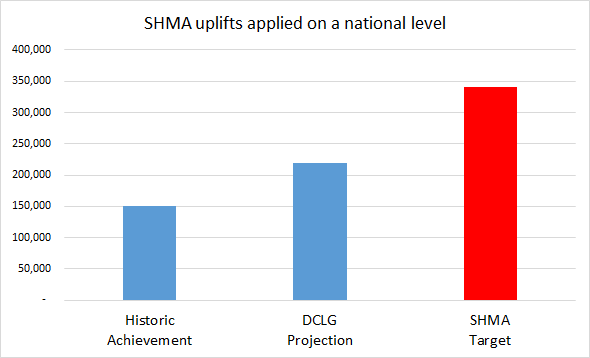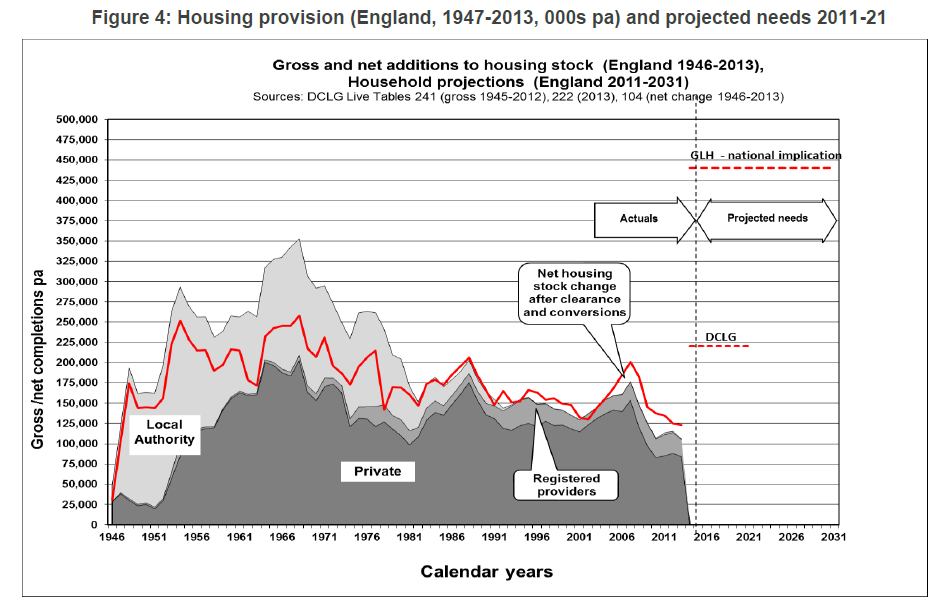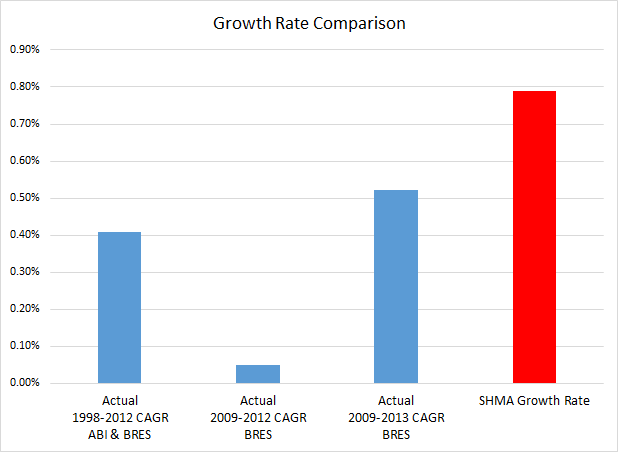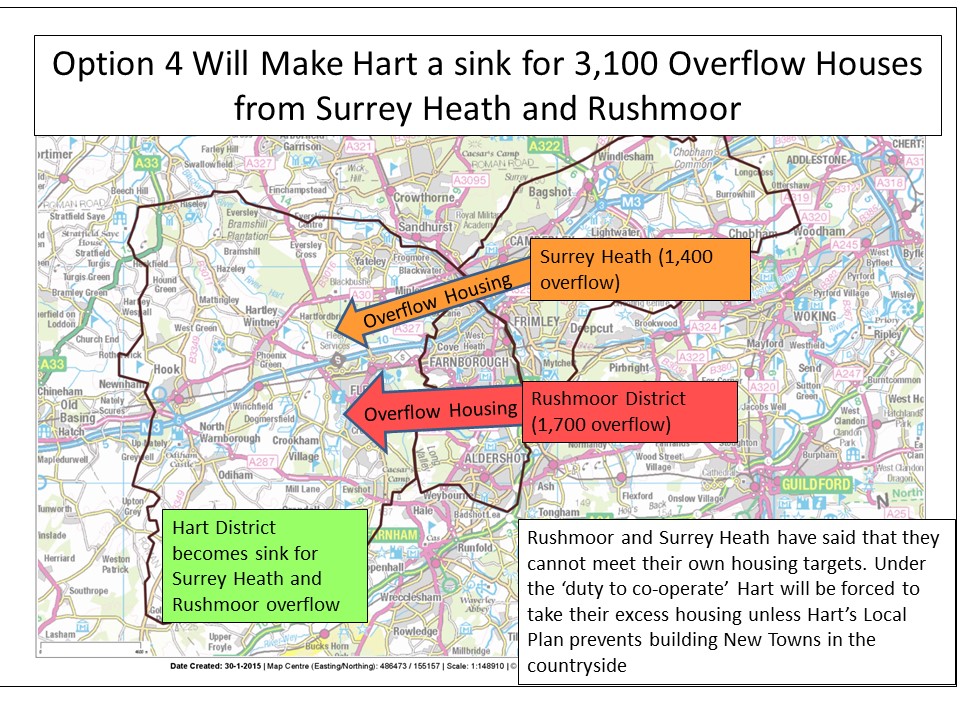I have a great deal of sympathy for residents of Fleet and Church Crookham who have suffered a great deal of development in recent years with insufficient investment in infrastructure. However, a new town in Winchfield, Hook and Hartley Wintney parishes is not the panacea for Fleet residents that that many of the Hart Councillors would have you believe.
There will be negative impacts in 4 main ways:
- Starvation of infrastructure funding
- Extra traffic and congestion
- Lack of affordable homes
- Destruction of amenity space
Infrastructure Funding
Hart Council currently has a £78m infrastructure funding deficit, much of it in Fleet, Church Crookham and Hook. This does not include healthcare where there is a forecast £47m funding deficit in five years time. A new town will need about £300m of infrastructure spending to make it work, but a realistic assessment of developer contributions is £40-50m. This leaves a further gap of ~£250m. There are already complaints about long waiting lists at doctors and lack of other amenities. It is clear that a new town will be under-funded with consequent impact on other parts of Hart District, where there will be no spare money to address the deficit that already exists in all areas of Hart including Fleet and Church Crookham.
Congestion
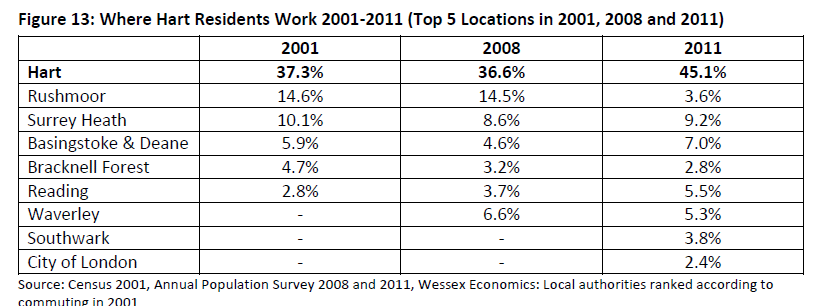
Where Hart Residents Work, SHMA Figure 13
Let’s have a look at where Hart residents work, using the evidence of the Strategic Housing Market Assessment (SHMA).
A bit less than half of them work in Hart – 45%. So of the 12,500 new people in a new town, 45% of those of working age will work in Hart. The biggest employment centres are in Fleet and Hook. So a significant proportion of the new town workers will go to work in Fleet. They are not all going to work in a new supermarket in the new town.
A significant proportion will also work in Rushmoor (Farnborough and Aldershot), Surrey Heath (Camberley) and Waverley (Farnham) – some 18% in total.
The most obvious travel to work route for many of these people will be along Pale Lane, through Elvetham Heath/Fleet or along Chatter Alley, through Dogmersfield, Crookham Village and Church Crookham. But these roads are narrow and a difficult to upgrade due to bridge constraints, so maybe a new road out of the new town on to Hitches Lane will be required.
A big portion – 6.2%, will use the train to go up to London from a station that is already full, on a line that is operating at or above design capacity.
Another group will go to Hook directly, or through Hook and/or Hartley Wintney to get to Reading or Bracknell adding to existing peak time congestion on the A30.
Pretending a new town will have no impact on congestion in Fleet and the Crookhams is plainly wrong.
Surely much better and more sustainable to direct housing development to the east of Fleet at Ancells Farm, Bramshott Farm and Pyestock (some of them brownfield sites) with a cycle route to Fleet station and a cycle route to the Cody Tech centre or the Farnborough airport complex.
Affordable Housing
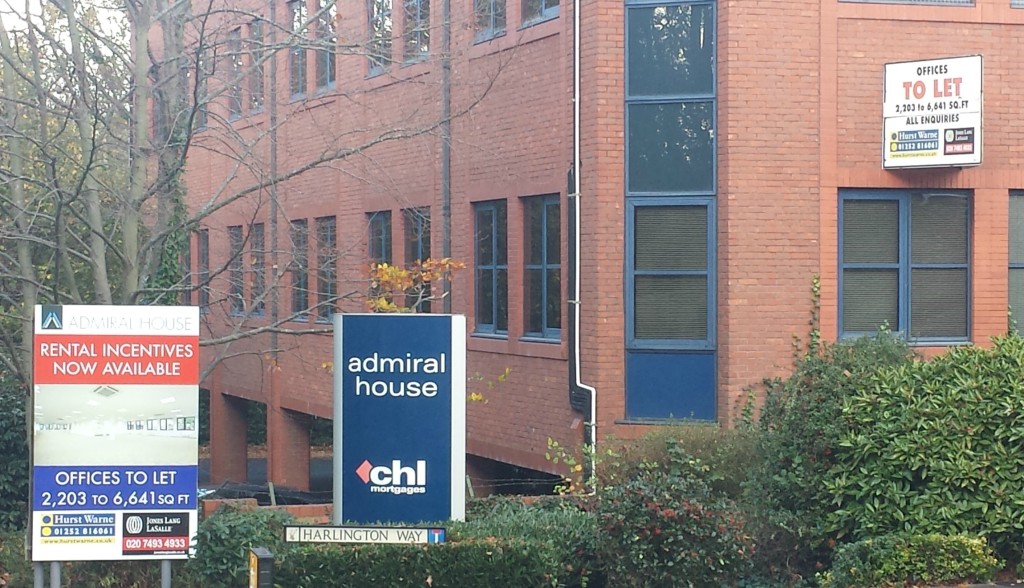
Admiral House, Harlington Way, Fleet, Hart District, Hampshire
As of 26/11/15, the cheapest 1-bed and 2-bed new homes available within 1 mile of Fleet are available at prices of £215,000 and £235,000 (Rightmove). Median household incomes for Hart are £40,200 per Figure 4.8 of the SHMA. This means that the cheapest new homes are between 5.3 and 5.8 times median incomes and out of reach for the average household, so something should be done.
The SHMA calls for 60-70% of new build to be 1 and 2-bed properties across the Housing Market Area. The developers are going to want to do what they always do, that is to build 3-5 bedroom detached houses in the new town which will be no doubt attractive to those moving from London, but will do nothing to meet the needs of ordinary people living in Hart.
Surely, it would be better to build smaller, starter properties on brownfield sites such as Ancells Farm, Fleet Road, Harlington Way in Fleet and Bartley Wood in Hook to give younger people a more affordable first step on the housing ladder. This iwll do far more to meet the actual need outlined in the SHMA, and be more sustainable for our environment.
Destruction of amenity space
The Heart of Hart, the area around Winchfield, is used as an amenity area for walking, cycling, watching wildlife and other recreation. Concreting it over and joining together Hartley Wintney, Winchfield and Hook into a giant Hartley Winchook conurbation will lead to lack of amenity for everyone. Hart Council is yet to report on the consultation it ran earlier this year on how we value our amenity space.
If you are concerned about the impact of a new town, we have created two guides to responding to the consultation that are available on the downloads below. The comments are designed to be cut and pasted into the boxes provided. It will be very powerful if you could edit the comments into your own words. Please do find time to respond to the consultation and play your part in saving our countryside.
Full version:

2-minute version:






